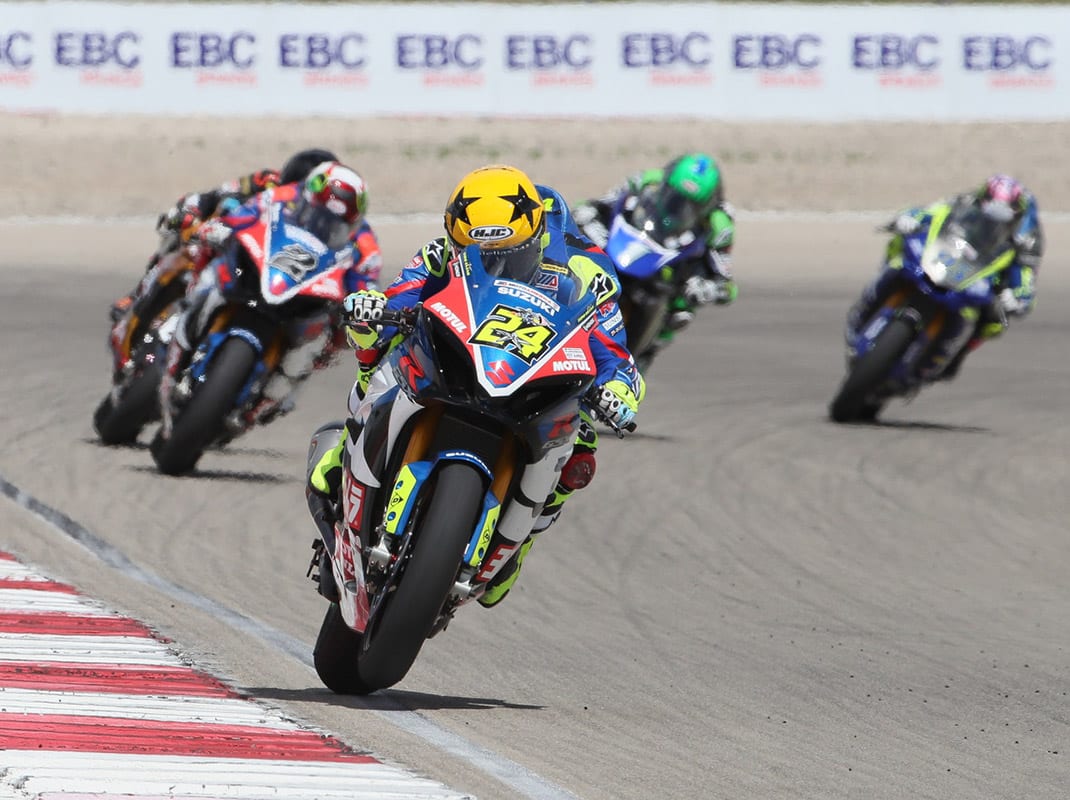It has been five years since the KRAVE Group took over America’s top motorcycle road racing series, and three-time world champion and successful team owner Wayne Rainey has learned a lot.
“Being a racer, I thought the guys that ran the sport didn’t know what the hell they were doing most of the time. I quickly figured out they knew more than I thought,” Rainey said. “This side of the fence has been a lot of work. As a team owner or a racer, you are working for yourself and what it takes to be competitive. Representing 130 or 140 racers, each with their own situation, has been eye opening for sure.”
Half a decade in, the series thought to be near death’s door when Rainey’s group took control, has survived and even seen some marked improvements. The competition level of the series has vastly improved and Rainey’s group has its best TV deal yet for 2019. There is more progress to be made, but the foundation of the series is much stronger. “It’s taken five years to get to this point,” he said. “We’re excited.”
MotoAmerica, as the series was rebranded when Rainey’s group took the helm, had plenty to improve upon back then. Motorcycle road racing in America was in total shambles, with no TV, a limited schedule of a half-dozen events and a dwindling number of teams. There was no real post-recession recovery for the motorcycle industry and the Daytona Motorsports Group was ready to give up on road racing.
Rainey and his partners had numerous philosophical differences with the previous series organizers. While DMG wanted to make the series insular and uniquely American and perhaps a two-wheeled version of NASCAR, MotoAmerica wanted to realign with the world championships to help Americans contend on an international level.
“We had to do something to try to give our riders an opportunity to race in the world championship, if they wanted, and to get international riders to come into our championship and have a competitive ride,” Rainey noted. “In our case, how we ended up in the series and the partners I am with, there was a real need to get the championship and get it stable and get it where our racers and teams can be competitive — not just here but abroad. That was our main point. I think, in general, it worked.”
Changes seen throughout the motorsports landscape also meant a new reality in motorcycle road racing. MotoAmerica couldn’t just change course and go back to doing what had been done in the past.
“What we didn’t see coming was racing 10 or 15 years ago was a heck of a lot different than what it looks like now,” Rainey explained. “Back then, there was a lot more manufacturer participation in the series, there were more riders and teams, there were more international riders. Twenty years ago, the American championship was very competitive. A lot of the international riders came through our championship. The rest of the world started getting their (national) championships under control and that worked well for them. For us, it went a little stagnant.”
With four factory bikes left in the premier class and only a handful of “real” Superbikes remaining to augment them, the first obstacle was to boost those numbers. It was no surprise that Rainey, with his ties to world championship organizer Dorna, looked to the World Superbike championship for a rules package. The goal was to make things competitive and bringing the machines the rest of the world uses back to America.
“The way our rules work, we follow the FIM World Superbike rules,” Rainey said. “There are spending caps put on the electronics, so this keeps the factory teams from running away. The competition in every class has been the part we haven’t had to mess with much. It seems every race, somebody’s duking it out for the lead. It’s going well.”
Privateer J.D. Beach and Attack Performance scored a surprise victory at Virginia Int’l Raceway earlier this year.
“It was massively popular in our series, not just because J.D. is a popular rider and Attack Performance is one of the teams coming on the past coupe of years. The way the rules are laid out, it shows you can be competitive on a privateer team and a privateer bike against the factory teams,” Rainey explained. “A good example of that was J.D. winning at VIR. It was mixed conditions, half-wet, half-dry and they were able to put together a package and he won the race. They have been knocking at the door, along with the Westby team and Mathew Scholz. They are right there as well. Kyle Wyman has brought a Ducati to the series and he led when it was really wet in that race. BMW is there, Kawasaki has some bikes in the series, Jake Lewis on his Suzuki with John Ulrich’s team and also Jake Gagne coming back from World Superbike and riding the BMW. He’s been injured a bit but I think when everyone is healthy, it is very competitive. It shows the rules are working.”
To continue reading, click below.
